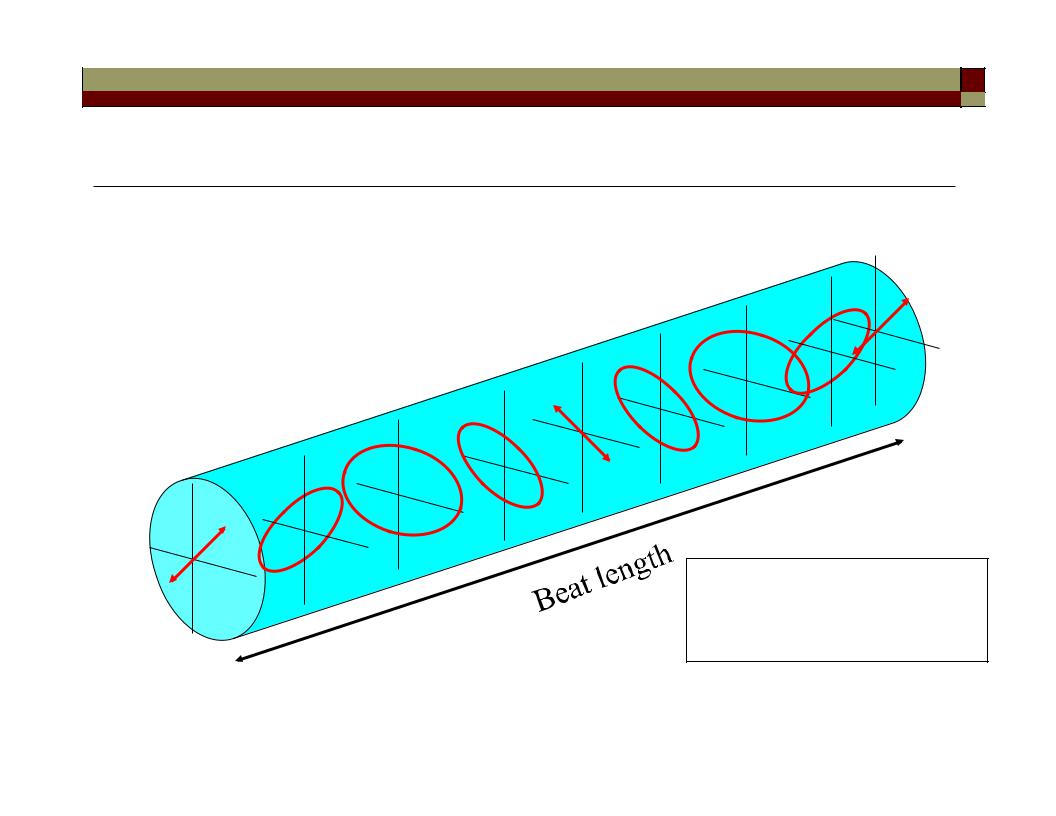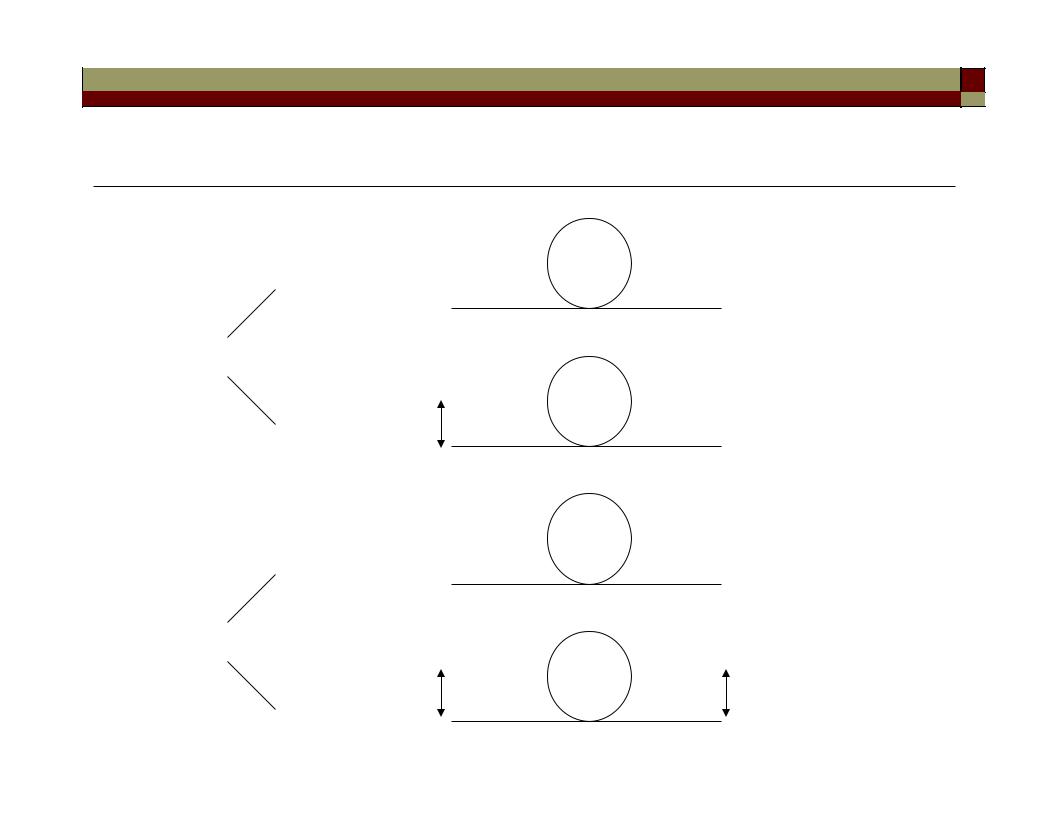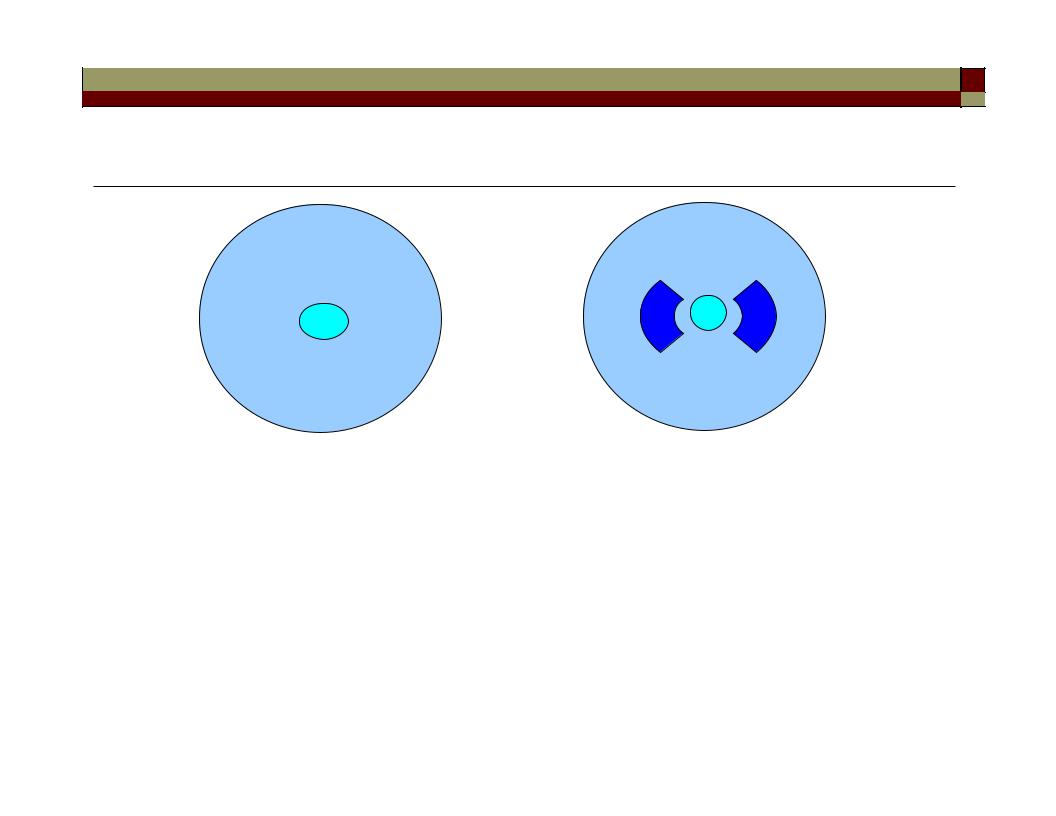
Lect5-Optical_fibers_2
.pdf
Real optical fiber geometry is by no means perfect
Corning SMF-28 single-mode fiber glass geometry
1.cladding diameter: 125.0 ± 0.7 m
2.core-cladding concentricity: < 0.5 m
3.cladding non-circularity: < 1%
[1- (min cladding dia./max clad dia.)]
31

Fiber birefringence
• State-of-polarization in a constant birefringent fiber over one
beat length. Input beam is linearly polarized between the slow π
and fast axis.
π/2
fast axis
slow axis
2π
3π/2
Lbeat = λ / B ~ 1 m (B ~ 10-6)
*In optical pulses, the polarization state will also be different for |
|
different spectral components of the pulse. |
32 |
|

Remark on polarizing effects of conventional / polarizationpreserving fibers
Unpol. input
conventional
Pol. input
Unpol. input
polarizationpreserving
Pol. Input (aligned with
a principal axis)
Unknown output (random coupling between all the polarizations present)
Unknown output
Unknown output
Pol. output
33

Polarization-preserving fibers
The fiber birefringence is enhanced in single-mode polarization-preserving (polarization-maintaining) fibers, which are designed to maintain the polarization of the launched wave.
Polarization is preserved because the two normal modes have significantly different propagation characteristics. This keeps them from exchanging energy as they propagate through the fiber.
Polarization-preserving fibers are constructed by designing asymmetries into the fiber. Examples include fibers with
elliptical cores (which cause waves polarized along the major and minor axes of the ellipse to have different effective refractive indices) and fibers that contain nonsymmetrical stress-producing parts.
34

Polarization-preserving fibers
Elliptical-core fiber |
bow-tie fiber |
|
• The shaded region in the bow-tie fiber is highly doped with a |
|
|
material such as boron. Because the thermal expansion of this |
|
|
doped region is so different from that of the pure silica cladding, |
|
|
a nonsymmetrical stress is exerted on the core. This produces |
|
|
a large stress-induced birefringence, which in turn decouples the |
|
|
two orthogonal modes of the singlemode fiber. |
35 |
|

Field analysis/wave equation of weakly guiding fibers
Key derivations for your own reading
36

Field analysis of weakly guiding fibers
Here, we begin the LP mode analysis by assuming field solutions that are linearly polarized in the fiber transverse plane.
These consist of an electric field that can be designated as having x-polarization and a magnetic field that is polarized along y –
the weak-guidance character of the fiber results in nearly plane wave behavior for the fields, in which E and H are orthogonal and exist primarily in the transverse plane (with very small z components).
E = ax Ex(r, φ, z) = ax Ex0(r, φ) exp (–iβz)
H = ay Hy(r, φ, z) = ay Hy0(r, φ) exp (–iβz)
37

Field analysis of weakly guiding fibers
Because rectangular components are assumed for the fields, the wave equation
t2E0 + (k2 – β2) E0 = 0
is fully separable into the x, y, and z components
t2Ex1 + (n12k02 – β2) Ex1 = 0 r ≤ a
t2Ex2 + (n22k02 – β2) Ex2 = 0 r ≥ a
where (n12k02 – β2) = βt12 and (n22k02 – β2) = βt22 |
38 |

Field analysis of weakly guiding fibers
Assuming transverse variation in both r and φ, we find for the wave equation, in either region
∂2Ex/∂r2 + (1/r)∂Ex/∂r + (1/r2)∂2Ex/∂φ2 + βt2Ex = 0
We assume that the solution for Ex is a discrete series of modes, each of which has separated dependences on r, φ, and z in product form:
Ex = Σi Ri(r)Φi(φ) exp(-iβiz)
Each term (mode) in the expansion must itself be a solution of the wave equation. A single mode, Ex = RΦ exp(-iβz) can be substituted into the wave equation to obtain
(r2/R) d2R/dr2 + (r/R) dR/dr + r2β 2 |
= -(1/Φ) d2Φ/dφ2 |
39 |
t |
|
|

Field analysis of weakly guiding fibers
The left-hand side depends only on r, whereas the right-hand
side depends only on φ. |
|
Because r and φ vary independently, it follows that each side |
|
of the equation must be equal to a constant. |
|
Defining this constant as l2, we can separate the equation into |
|
two equations |
|
d2Φ/dφ2 + l2Φ = 0 |
|
d2R/dr2 + (1/r) dR/dr + (βt2 – l2/r2)R = 0 |
|
We identify the term l/r as βφ for LP modes. |
|
The bracketed term therefore becomes βt2 - l2/r2 = βr2 |
40 |
